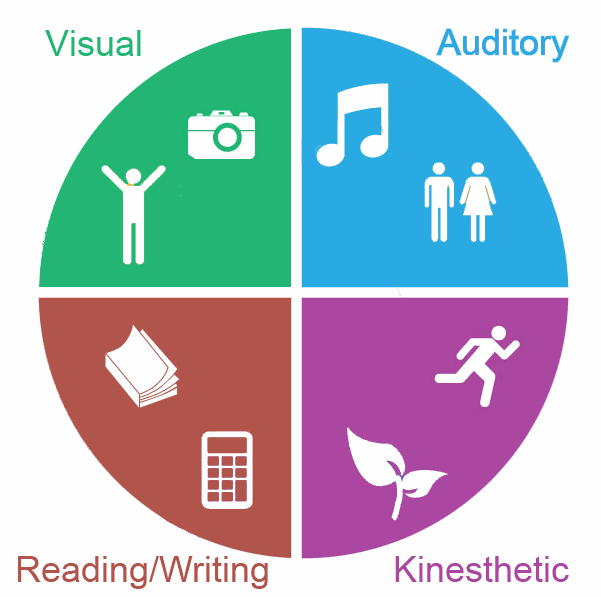Have you ever thought how come people can just hear what the teacher says and understand it, but you can not do this because all your teacher’s words have always blown away if you do not write it down and read it again? Or have you ever noticed your friend’s notebook which is full of color while yours is just black-colored? It is all about learning style. Learning style is the method that is used for processing information, this includes how people gather, interpret, organize, and think about the information. People can learn in different styles so that maybe you can have many differences with your friend in ways of learning, such as what the questions asked before. It can be a big thing because it may affect the process of learning. There are so many ways of learning but the famous one is VARK Style, which is introduced by Neil D. Fleming in 1987. VARK is an acronym for Visual, Aural, Read/Write, and Kinesthetic. Knowing the best learning style for you whether it is visual, auditory, read/write, or kinesthetic, can make the process of learning more effective.
When you easily remember what you see, you can use the visual style as your learning style. Visual style means the power is on your eyes. People with visual style can easily think in pictures which means the existence of pictures is very important. But it is not just a picture, visual learners can effectively memorize materials which are contained in graphics, charts, concept maps, hierarchies, or anything that has been highlighted. Visual learners also pay attention to body language of the person who gives any lectures or presentations. Another word is, visual learners can absorb information which is visually prominent so visual learners can learn best by creating visual reminder, highlighting keywords, or making concept map.
If information comes better through your ears, the aural style perhaps is the fittest learning style for you. Aural learners learn with hearing so that they better learn by recording lectures or notes and listening to it later, or they can use audiobooks. Another strategy of which aural learners learn is they can read the materials loudly because the power is on their ears; not eyes. Aural learners can also obtain information effectively by group discussion because they will hear people’s arguments or statements which boost their information. Aural learners can also learn best by creating songs to help them memorize something difficult, such as anatomy of the human body.I think this is unique because the aural learners try to find a way in memorizing anatomy of the human body but on the other side visual learners love to memorize it because it is a visual thing.
Another style that could be yours is read/write style. This style is for people who prefer printed words as the method to convey and receive information. It is more like the method that we get when we were in primary school when our teacher assigned us to read textbooks and then write notes. Read/write learners can learn best by making lists or reading definitions. Read/write learners can not find any difficulties in reading thick books or taking notes from lectures. Learning strategies that may help read/write learners are re-writing and re-reading notes routinely or turning visual information into words. It is also unique because read/write learners learn in a way which is opposite to visual learners because visual learners turn words into visual mode rather than reading materials in the form of words.
The last one is kinesthetic learning style. If you are the kind of people who can acknowledge new things by touching, doing, or moving, you better try kinesthetic learning style. Actually, kinesthetic learners use their physical experiences to understand the materials. They will not stay sitting motionless to see or hear the materials because they prefer moving around in order to memorize. Kinesthetic may better learn by contributing actively in drama or role play performances so that they will experience the materials directly; not just a theory.
Every individual has their own style of learning. Knowledge of learning styles hopefully can affect the process of learning so that learners will easily absorb the information. Another thing is, knowing the fittest learning style for you can also help you to survive in the education steps you are in. Knowing your learning style can also be a good way to encourage you to learn because sometimes we ask ourself why do we learn and how to learn effectively. You also probably have more than one style, which is called multimodal. But it is not about how many style you have. It is also not about what particular learning style that is better than others. It is all about what can be the fittest style for you. So, what is yours? (Nathalia Isabella Muskitta)





























Comments are closed.